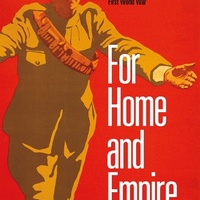
Steve Marti
Supervisors: Jonathan Vance and Francine McKenzie
less
Related Authors
Jane Chapman
University of Lincoln
Dan Ellin
University of Lincoln
Nathan Wise
University of New England - Australia
Graham Seal
Curtin University
Christina Spittel
University of NSW at Canberra
Frank Bongiorno
The Australian National University
James Bennett
The University of Auckland
Leah Riches
Monash University
Sarah Midford
La Trobe University
InterestsView All (16)









Uploads
Papers by Steve Marti
Both space and scale influenced the way English Canadians chose to coordinate their voluntary efforts for the war overseas and thus how they constructed the spatial boundaries of their imagined communities.
practitioners. Prominent among these were psychiatric conditions, commonly termed as shell shock. This paper will investigate the Royal Army Medical Corps' (RAMC) treatment of shell shock by incorporating public advocacy as a significant factor for consideration. It will be shown that public activism for shell shock patients was as important to the RAMC as pressure from the British military in implementing a course of action for treating psychiatric casualties on the western
front. This paper will examine the RAMC's status within the British Army and the effect this status had on its submission to a military system. The psychiatric expertise within the RAMC will be assessed as a factor in its ability to generate a workable solution to the problem of shell shock. The British public's awareness of shell shock will be discussed, as well as their level of activism on the matter.
Lastly, the effects of public opinion and advocacy will be assessed as a
consideration in the RAMC's implementation of treatment methods for psychiatric
casualties.
Talks by Steve Marti
Drafts by Steve Marti
This article will examine the role of the slouch hat as a material and visual device that helped communicate the Anzac legend. While most of the scholarship that examines the construction of this narrative focuses on its articulation in prose, this narrative was also popularised through other media. Artists drew symbols of the frontier into their paintings while museum directors arranged their artefacts to support this narrative. This article will argue that the slouch hat provided an essential visual device to connect the narratives of frontier and martial masculinity through the image of the Australian soldier.
Both space and scale influenced the way English Canadians chose to coordinate their voluntary efforts for the war overseas and thus how they constructed the spatial boundaries of their imagined communities.
practitioners. Prominent among these were psychiatric conditions, commonly termed as shell shock. This paper will investigate the Royal Army Medical Corps' (RAMC) treatment of shell shock by incorporating public advocacy as a significant factor for consideration. It will be shown that public activism for shell shock patients was as important to the RAMC as pressure from the British military in implementing a course of action for treating psychiatric casualties on the western
front. This paper will examine the RAMC's status within the British Army and the effect this status had on its submission to a military system. The psychiatric expertise within the RAMC will be assessed as a factor in its ability to generate a workable solution to the problem of shell shock. The British public's awareness of shell shock will be discussed, as well as their level of activism on the matter.
Lastly, the effects of public opinion and advocacy will be assessed as a
consideration in the RAMC's implementation of treatment methods for psychiatric
casualties.
This article will examine the role of the slouch hat as a material and visual device that helped communicate the Anzac legend. While most of the scholarship that examines the construction of this narrative focuses on its articulation in prose, this narrative was also popularised through other media. Artists drew symbols of the frontier into their paintings while museum directors arranged their artefacts to support this narrative. This article will argue that the slouch hat provided an essential visual device to connect the narratives of frontier and martial masculinity through the image of the Australian soldier.